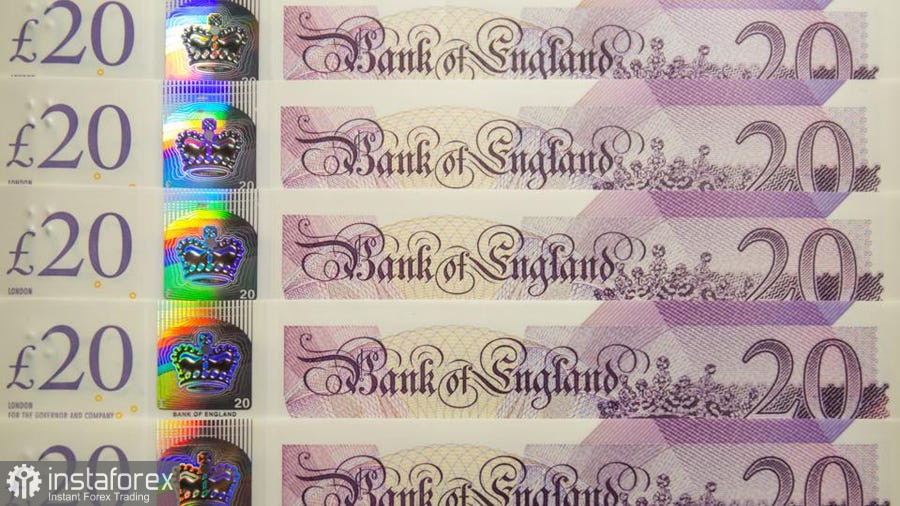The pound against the dollar follows the U.S. currency, while ignoring "own" fundamental factors. In general, the volatility in the currency market has noticeably decreased—even the USD/JPY pair, which fell 700 points at the beginning of the week, is now drifting in a relatively narrow price range. The pound sterling also does not show much activity, although last week, GBP/USD first updated the semi-annual high (1.2444) and then fell sharply, ending the five-day period at around 1.2119. Such a rapid 300-point price spurt occurred after the announcement of the results of the last meeting of the Bank of England this year.
Even though the British regulator made hawkish decisions from the formal point of view (raising the interest rate by 50 points and indicating its further course for rate hike), the pound was not the beneficiary of the December meeting. Moreover, traders were skeptical about the declared course of the British regulator—according to some experts, the BoE will either slow down the pace of tightening monetary policy or take a break next year.

Such assumptions of a "dovish" nature did not appear out of nowhere. Analyzing the results of the December meeting, we can conclude that the emphasis in the rhetoric of the central bank members is gradually shifting towards the assessment of the side effects of monetary tightening. At the same time, the regulator made a separate note of the slowdown in inflation growth: inflation indicators are expected to continue gradually slowing down in the first quarter of next year. Overall, the tone of the BoE's final communique was less forceful than the rhetoric of the accompanying statements of the Fed, the European Central Bank and even the Swiss National Bank.
However, these are subtle signals of a verbal nature. And quite probably, the scale at the December meeting would have tipped in favor of the pound, if not for one "but": two (of nine) members of the Monetary Policy Committee of the Bank of England voted against rate hike. Newly appointed (to replace Michael Saunders) Swati Dhingra, as well as Silvana Tenreyro, were in favor of keeping the interest rate at 3%. That, they said, is "more than enough" to bring inflation back to the target level. Also, representatives of the Committee's dovish wing stressed that there is currently no compelling reason to further increase the rate "for risk management reasons."
And although the rest of their colleagues supported the next round of tightening monetary policy, the manifestation of "dissidence" alerted market participants. Previously, members of the Committee took unanimous decisions, so the lack of solidity (even in such a minimal manifestation) put pressure on the pound. At the same time, the actual split in the Committee was supplemented by rather cautious wording of the accompanying statement.
That is why there was a stalemate situation on the GBP/USD pair. The Bank of England did not become an ally of the British currency, thus extinguishing the upward trend. But the bears need the strong dollar to increase the pressure on the pair. Meanwhile, the U.S. dollar index is fluctuating in a narrow range, waiting for the next information impulse. Friday's release of the PCE Core Index growth data may be that impulse.
On the weekly chart, the GBP/USD pair updated a multi-year low at the end of September, reaching 1.0345. After that, the price turned 180 degrees and "walked" more than 2,000 points since then, marking the high of the year at 1.2444. According to a number of currency strategists, for buyers of GBP/USD this is a kind of ceiling that will not be overcome in the medium term. The Bank of England was the "last hope" for the pair's bulls, at least in the context of the current year.
Today, the pound came under additional pressure after the release of data on the growth of the British economy for the third quarter. The final estimate was released today, which was unexpectedly revised downward. Thus, the UK economy shrank by 0.3% on a quarterly basis (initial estimate of -0.2%, as in the previous month). The market expected a decline of 0.2% in the reporting period. On an annualized basis, UK GDP grew by 1.9% in the third quarter. This component has been substantially revised downwards from an initial estimate of 2.4%.
At the moment, it is advisable to take a wait-and-see attitude for the GBP/USD pair, given tomorrow's inflation release. Obviously, the pound is currently following the greenback, so the price dynamics in the medium term will be determined by this report. According to most analysts, the PCE index will fall to 4.6% in November. In this case, the indicator will update a multi-month low, reflecting the weakest growth rate since October 2021. In such a fundamental scenario, the dollar will be under pressure throughout the market, including in pair with the pound. But if the release comes out in the green zone, the back reaction of dollar bulls will follow: GBP/USD will consolidate under the 1.2000 key level, having determined for itself the next "round" and psychologically important target at 1.1900.





















